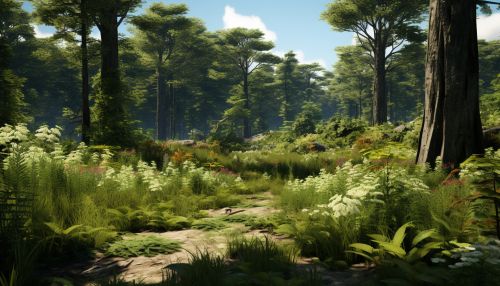Invasive Plant Species and Ecosystem Health
Introduction
Invasive plant species are non-native plants that have been introduced to a new environment and have the potential to cause harm to the local ecosystem, economy, or human health. These plants are characterized by their rapid growth and reproduction, often out-competing native species for resources. The impact of invasive plant species on ecosystem health is a topic of significant concern in the field of ecology.


Characteristics of Invasive Plant Species
Invasive plant species typically share a number of characteristics that enable them to thrive in new environments. These include rapid growth and reproduction, high dispersal ability, and the ability to adapt to a wide range of environmental conditions. Invasive plants often lack natural predators or diseases in their new environments, allowing them to grow unchecked.
Impact on Ecosystem Health
The introduction of invasive plant species can have a profound impact on ecosystem health. They can outcompete native species for resources such as light, water, and nutrients, leading to a decrease in biodiversity. Invasive plants can also alter soil chemistry, disrupt nutrient cycling, and change the structure and function of ecosystems. In some cases, invasive plants can even alter fire regimes, leading to more frequent and intense wildfires.
Case Studies
Purple Loosestrife
Purple loosestrife (Lythrum salicaria) is a European plant that has become invasive in North America. It grows rapidly in wetlands, displacing native plants and reducing biodiversity. The dense growth of purple loosestrife can also disrupt water flow and degrade habitat for waterfowl and other wildlife.
Kudzu
Kudzu (Pueraria montana) is a vine native to Asia that has become invasive in the southeastern United States. Kudzu grows rapidly, covering trees and shrubs and preventing them from receiving sunlight. This can lead to the death of native plants and a decrease in biodiversity.
Management and Control
The management and control of invasive plant species is a complex and challenging task. It often involves a combination of mechanical, chemical, and biological methods. Early detection and rapid response are crucial to prevent the establishment and spread of invasive plants. Public education and awareness are also important components of invasive plant management.
Conclusion
Invasive plant species pose a significant threat to ecosystem health. Their rapid growth and ability to outcompete native species can lead to a decrease in biodiversity and changes in ecosystem structure and function. Effective management and control of invasive plants is crucial to preserve our natural ecosystems.
